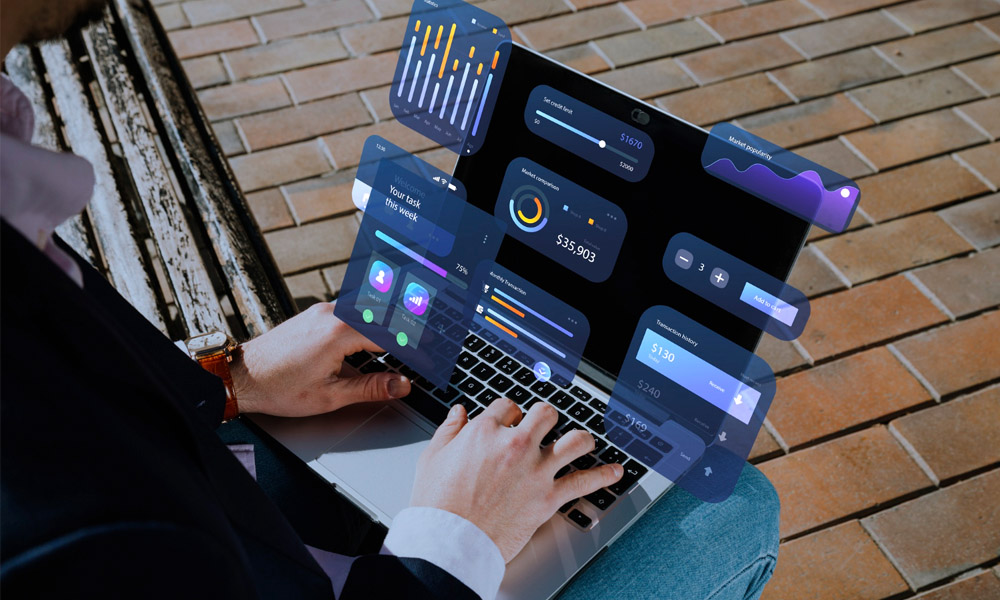Blog
The Beginner’s Guide to Transds and Real-Time Data
Published
4 months agoon
By
Mr Henry
We live in a time where data never stays still. It moves from one place to another in seconds. It crosses apps, platforms, and even countries. But here’s the problem—most data systems were never built for this speed or flexibility. That’s where Transds comes in.
Transds is a fresh idea that is changing how we look at data. It’s not just a tool or software. It’s a smarter way to handle information. Think of it like giving data the ability to shape-shift. It can change based on where it’s going or what it’s needed for. This makes everything faster, easier, and more useful.
In this article, we will explore what Transds is, why it is becoming so important, and how it is already being used in the real world. By the time you finish reading, you’ll see why many experts believe Transds is the future of data.
What Is Transds?
The word Transds stands for “transitional data structures.” But what does that really mean? It’s simple. It’s about creating data models that can change shape when needed. Unlike old data systems that stay fixed, Transds is flexible. It adapts in real time.
Imagine you have a puzzle that can change its pieces depending on the picture you want to build. That’s what Transds does with data. It makes data adjust itself based on the situation. Whether it’s for an app, a website, or a smart device, Transds ensures the data fits perfectly without extra work.
What makes this idea so powerful is that it doesn’t lock data into one shape or system. It lets data flow smoothly between different platforms and tools. This means fewer headaches for developers and faster results for businesses.
Why Is Transds Different from Traditional Data Models?
Traditional data systems are like bookshelves. They have a fixed number of shelves and slots, and everything must fit into them. If something new comes along, you have to rebuild the entire shelf. That’s slow and costly.
Transds works differently. It’s like having a shelf that can resize itself on its own. Need more space? It adjusts. Need a new layout? It shifts. This ability to adapt on the fly is what makes Transds so special.
For businesses, this means they don’t need to spend months fixing data systems when a new platform or device comes into play. With Transds, the data model can change in real time. This is why many companies see it as the future of fast and smart data.
Why Transds Is Trending Now
So why are people suddenly talking about Transds? The answer is simple: the world of data is changing fast. Every company now uses dozens of platforms—CRMs, analytics dashboards, cloud apps, IoT devices, and more. Each one speaks a different data language. Transds makes them all work together.
Another big reason is real-time data. People don’t want to wait for reports anymore. They want instant results. Whether it’s checking the traffic, getting medical updates, or shopping online, real-time data is everywhere. Transds helps systems adapt and deliver these fast results.
Finally, AI and machine learning are adding another layer. Machines now need data that has meaning, not just numbers. Transds can add this context, making AI smarter and more accurate.
How Does Transds Work?
You might be wondering—how does Transds really do all this? At the core, it uses something called dynamic schemas. These schemas can change their structure based on what’s needed at the moment. No rebuilding or manual coding is required.
There’s also a transformation layer. This acts like a translator, converting data formats in real time so they can move between different platforms without problems. Add to that metadata tags—tiny pieces of information that explain what the data means and how it should be used.
Think of it like this: Transds doesn’t just move data. It moves it smartly. It knows the rules, the context, and the purpose, making sure everything stays accurate and smooth.
Key Features of Transds
What makes Transds stand out? First, it’s flexible. It can change shape without losing meaning. Second, it’s real-time. This means it reacts instantly to changes. Third, it’s interoperable. It works with many platforms, no matter how different they are.
Another key feature is context-awareness. It’s not just about moving data; it’s about understanding what the data represents. For example, a simple “location” tag could mean GPS data for a delivery truck or a store address for a customer. Transds knows the difference and adjusts accordingly.
These features make Transds a perfect match for modern systems that require speed, accuracy, and flexibility all at once.
Real-Life Examples of Transds
To see how powerful Transds can be, let’s look at a few examples.
Healthcare: Imagine a patient record that needs data from hospitals, wearable fitness devices, and even lab research. Each of these sources has its own format. Transds can adapt the record’s structure in real time so that nothing is lost or mismatched.
Smart Cities and IoT: Think of a traffic system that uses data from road sensors, buses, weather apps, and even social media alerts. Instead of forcing all these systems into one fixed model, Transds transforms the data as needed so everything works together.
E-commerce: Have you noticed how online shops seem to know what you want? That’s personalization at work. With Transds, user profiles can change instantly based on browsing history, location, or device type, giving you better and more accurate product suggestions.
Benefits of Transds for Businesses
Why are so many companies starting to care about Transds? The answer is simple—it saves time and makes systems smarter. Businesses don’t have to spend weeks adjusting old data models every time a new tool or app is added. Transds can adapt instantly, which means faster results and less stress.
Another big benefit is interoperability. This means that systems from different vendors or platforms can easily work together. For example, a delivery company can link data from its fleet tracking app, warehouse system, and drone service without building a whole new database from scratch. Transds makes it all connect smoothly.
Real-time insights are another game-changer. Since Transds reshapes data instantly, companies can make faster decisions. Imagine a store predicting demand for certain products by analyzing live sales and weather data at the same time. With Transds, this is not only possible but easy.
Challenges and Risks of Using Transds
Like any new technology, Transds is not perfect. It comes with its own challenges. One of the biggest issues is governance. When data is always changing shape, it’s harder to track where it came from and how it’s being used. This can make auditing and compliance more complex.
Another challenge is resource use. Since Transds works in real time, it needs more power—CPU, memory, and bandwidth. If a company doesn’t optimize it properly, the system could become slower or more expensive to run.
Debugging and testing are also harder. Because data can appear in different forms, developers need to prepare for many scenarios when testing. And without strict rules, semantic drift can happen. This is when two systems read the same data but understand it differently. It’s like two people using the same word but meaning different things.
Transds and Real-Time Data: The Perfect Pair
Real-time data is everywhere now. From live sports scores to instant payment confirmations, people expect data updates without delay. This is where Transds shines. It doesn’t just move data—it reshapes and interprets it on the go.
For example, think about ride-sharing apps. They collect data from drivers, passengers, and traffic systems every second. If they used static data structures, they would be too slow to keep up. But with Transds, they can adjust and deliver accurate updates instantly.
The same logic works for industries like finance, logistics, and even entertainment. When paired with real-time systems, Transds turns raw data into useful actions—fast.
Tools and Technologies That Support Transds
While Transds itself is not a software tool, many technologies support its approach. Python is a favorite because of its flexible data libraries and easy scripting. Scala and Kotlin are also used for building real-time data pipelines.
GraphQL is another great fit. It allows apps to request only the data they need, in the shape they want, which aligns perfectly with the idea of dynamic data structures. Tools like Apache Arrow, Apache Beam, and TensorFlow Extended are also becoming popular in systems built with Transds principles.
The exciting part is that developers don’t need to start from scratch. They can use these existing tools and simply adopt the Transds mindset—thinking of data as flexible and adaptable instead of fixed.
Who Uses Transds Today?
Many companies are already using Transds concepts, even if they don’t call it by that name. Big tech firms like Salesforce, Snowflake, and Palantir use dynamic data approaches to keep their systems fast and responsive.
Research institutions also use these ideas when combining large datasets, like health records and genetic information, to make scientific discoveries. Even governments are starting to apply Transds in smart city projects, where traffic, weather, and public services need to work together.
Startups in finance, insurance, and e-commerce are also embracing Transds to build personalized and real-time services for their users.
How to Start Learning and Using Transds
If you are a developer or data engineer, you can start learning Transds by exploring tools that support flexible data. Begin with GraphQL, Apache Arrow, or even real-time streaming frameworks like Apache Beam.
You can also take online workshops or short courses about dynamic schema modeling and real-time data processing. These will help you think in terms of flexible data flows instead of rigid tables.
Another tip is to practice small projects. Try connecting two apps with different data formats and use transformation scripts to make them talk to each other. This simple exercise will help you understand the core idea behind Transds.
Bottom-Line
The world of data is moving faster than ever. Static models can’t keep up with the demands of 2025 and beyond. Transds offers a smarter, more flexible way to handle information. It’s not just about storing data—it’s about letting data move, adapt, and stay meaningful wherever it goes.
In the coming years, systems that use Transds principles will have a big advantage. They will be faster, smarter, and ready for any change. Whether you are building apps, analyzing data, or planning smart city projects, learning about Transds now will keep you ahead of the curve.
(FAQs)
Can Transds work without a database?
Yes, Transds can run on top of live data streams without storing everything in a database first, which shocks many developers used to traditional systems.
Does Transds replace APIs?
Not exactly, but it can reduce the need for multiple APIs by reshaping data instantly, making some complex API layers unnecessary.
Can Transds fix broken data formats on the fly?
Yes, Transds can automatically adjust and convert mismatched data formats in real time, without manual mapping or coding.
Is Transds already used in secret by big tech companies?
Yes, many top tech companies quietly use Transds-like approaches for real-time personalization, even if they don’t use the term “Transds.”
Could Transds make old data systems obsolete?
It might. As more companies shift to dynamic, real-time models, traditional static databases and ETL pipelines may become outdated.
People also read:

From Pocket to Desk: How Branded Ballpoint Pens Keep Your Business in Hand

Structurespy Com: The Smart Way to Explore Engineering and Architecture

How to Find Elenas Website TheSoundsTour

Who Is adamfoss999? The Online Name Everyone’s Talking About

What Is 73deb40? The Mysterious Code Everyone’s Talking About

What Is p13x13t? The Mysterious Code Everyone’s Talking About

What Is the Best Bra for Sweating? Stay Cool and Comfortable

Blazertje: The Stylish Little Blazer Everyone’s Wearing in 2025

What Is Acamento? The Beautiful Art of Finishing Things Right

I Don’t Like Plastic Windows: 5 Modern uPVC Myths Busted

Who Is Kate Garraway New Partner? The Truth Revealed

Brandi Raines Net Worth 2025: Age, Bio, Career, Husband and Children

Betsy Grunch Net Worth 2025: Salary, Career, Husband, and Life Story

Salma Shah Biography: Age, Career, Net Worth, Husband and Children

Sophia Wenzler Biography: Age, Date of Birth, Husband, Career Story, and Net Worth

Kay Crewdson Biography: Age, Date Of Birth, Husband, Children, and Net Worth

Nomia Iqbal Biography: Age, Husband, Career, Net Worth and BBC Journey

Mike Danson Biography: Age, Net Worth, Wife, Children and Full Story

Ági Barsi’s Untold Story: Sister Of Judith Barsi And Her Battle With Cancer

Who Is Nigel Rosser? All About Isabel Oakeshott’s Ex-Husband

From Pocket to Desk: How Branded Ballpoint Pens Keep Your Business in Hand

Structurespy Com: The Smart Way to Explore Engineering and Architecture

How to Find Elenas Website TheSoundsTour

Who Is adamfoss999? The Online Name Everyone’s Talking About

What Is 73deb40? The Mysterious Code Everyone’s Talking About

What Is p13x13t? The Mysterious Code Everyone’s Talking About

What Is the Best Bra for Sweating? Stay Cool and Comfortable

Blazertje: The Stylish Little Blazer Everyone’s Wearing in 2025

What Is Acamento? The Beautiful Art of Finishing Things Right

I Don’t Like Plastic Windows: 5 Modern uPVC Myths Busted
Categories
Trending
-

 News2 months ago
News2 months agoWho Is Kate Garraway New Partner? The Truth Revealed
-

 Net Worth7 months ago
Net Worth7 months agoBrandi Raines Net Worth 2025: Age, Bio, Career, Husband and Children
-

 Net Worth7 months ago
Net Worth7 months agoBetsy Grunch Net Worth 2025: Salary, Career, Husband, and Life Story
-

 Biography7 months ago
Biography7 months agoSalma Shah Biography: Age, Career, Net Worth, Husband and Children
